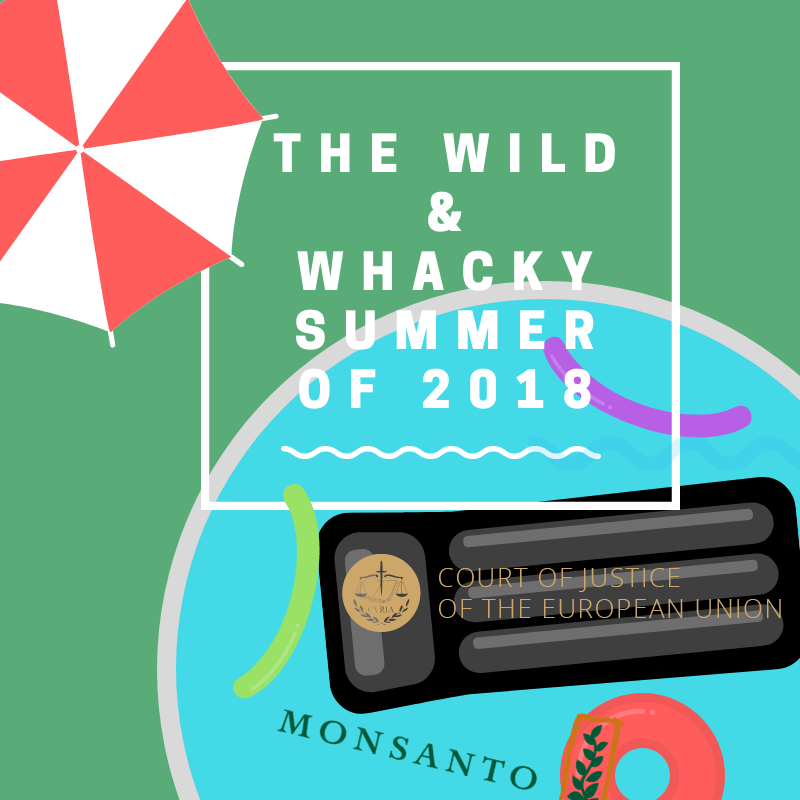Who holds the future of agriculture, farmers or the courts?
What a summer! I’m not talking about a whirlwind vacation, a summer full of events or even this weather in which our forecasters have given up on science for accurate reports and turned to consulting a Ouija board in a vain attempt to have even a minor degree of accuracy. No, instead what sets the summer of 2018 apart for me were two legal decisions made in courtrooms half a world apart, These two court rulings are going to have tremendous impacts on agriculture for years to come. The decisions made this summer will impact the future of agricultural labs and research, and more importantly farmers choices of technology and practices.
Courts trust the old over the new
In late July, the first precedent-setting event happened. The Court of Justice of the European Union (CJEU) ruled that genome editing must be regulated as transgenic technology which produces GMOs. In the ruling, the Court determined that since random, untargeted mutagenesis had been used for a long period of time, it was safe; whereas targeted, site-specific mutagenesis could possess unknown risks. This is the equivalent of arguing that a 1950s Studebaker with no safety features is a better automobile for the roads than a brand new automobile that is loaded with safety features of all kinds. The rationale of this is simply stupefying, perhaps even loonie.
The Court case that may change agriculture
You may have already heard about the August decision involving Johnson vs Monsanto, in which the Californian juries ruling in favour of the plaintiff will affect modern agriculture and policy. Mr. Johnson, a former “Grounds Integrated Pest Control Manager” for Benicia Unified School District was the first cancer patient to be awarded remuneration through the courts from Monsanto. Mr. Johnson and his legal counsel claim that his exposure to glyphosate caused his cancer (epidermotropic T-cell lymphoma) and that Monsanto failed to warn Mr. Johnson a substantial factor in causing harm, the jury has awarded him $289 million.
Glyphosate, the active ingredient of herbicides like Roundup has not yet been proven to cause cancer, and has been deemed safe by health agencies and approved by governments for 45 years. In fact, in 2017, the Canadian regulatory agency responsible for chemical approval and renewal reviewed scientific evidence of glyphosate’s use, renewing it for the next 15 years.
In March 2015, IARC reported Glyphosate to be ‘probably carcinogenic’. Since this time numerous governments have reassessed the chemical. The following are just a few nations which have concluded that it is not likely carcinogenic and have not imposed a ban on the chemical:
>> Health Canada
>> USA‘s EPA
>> The Australian Pesticides and Veterinary Medicines Authority
>> New Zealand’s EPA
>> In 2016, the Joint FAO/WHO Meeting on Pesticide Residue (JMPR) “concluded that glyphosate is unlikely to be genotoxic at anticipated dietary exposures.”
>> European Chemicals Agency (ECHA) an agency of the European Union have not yet found scientific evidence to classify glyphosate as carcinogenic
The court decisions of this wild summer of political interference on science-based regulation are likely going lead to a flood of lawsuits against every aspect of agriculture imaginable. Perhaps what is most frustrating about this is that courtroom evidence and jury verdicts will be used interchangeably with the truth and become the new standards, when in fact courtroom evidence is not the same as scientific evidence. Equally as frustrating is that members of society are willing to accept the possibility of dying from texting while driving or from smoking, but they have zero tolerance for possible risks of the production of their food. It will certainly be interesting to observe what happens the next time people die from consuming e. coli tainted organic food products.
WHAT DOES THE FUTURE HOLD?
My crystal ball is on the fritz at the moment, so I’ve got no idea of how this is going to play out over the next decade, other than it isn’t looking great for agriculture and farmers. I expect European farmers will certainly be at a disadvantage as investments in the development of new crop varieties leave Europe for countries that support innovative breeding technologies, whereas farmers around the world could be impacted from the delusional decision in a California courtroom. Maybe the new norm is whacky?


